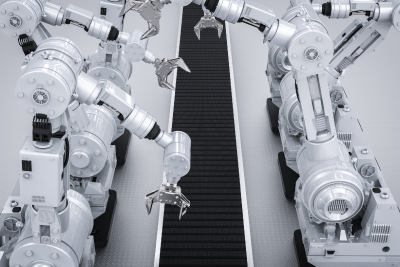Why Gearboxes Are Important to AGVs and AMRs?
- Syed Sagheer Abbas Rizvi
- Dec 31, 2022
- 3 min read

In the era of smart manufacturing, applying modern technologies and automated machinery to boost output and efficiency has become the key to factory operation. One of the crucial foundational
components of early automation technology is the automated guided vehicle or AGV. It
moves by using ground-based guideline technology.
AMR (Autonomous mobile robot) is equipped w
ith onboard sensors that enable it to obey instructions from a centralized server, maintain its route map and navigation, and react logically or avoid obstacles on its own. Thanks to smaller, more effective, and more functional motion control technologies, AMRs and AGVs are revolutionizing production and logistics.
How Do AMRs and AGVs Operate?
Material can be moved inside a facility using AMRs and AGVs. AGVs frequently require operator supervision and are led by predetermined paths or some forms of fixed infrastructure, such as embedded wire, magnetic tape, QR code stickers, or laser targets. AGVs are frequently employed in industrial settings to move goods, components, and raw materials between production lines or at a warehouse.
AMRs, in contrast, employ cameras, built-in sensors, and laser scanners to detect their surroundings and locations on a map and find the quickest route through their operational space between two points. AMRs actively and securely navigate around obstacles by taking an alternate route in addition to avoiding them.
AMRs are highly adaptable for production lines that demand flexibility and modification in contemporary manufacturing environments since changing the mission just requires minor software updates. They are typically utilized to replace sophisticated labor in industries like deliveries, security, medical and healthcare, and warehouse distribution.
Why are Gearboxes crucial to AMRs and AGVs?
The evolution of autonomous mobile robots has led to an increase in intelligence, autonomy in navigation, speed, loading capacity, and positioning precision, as well as a larger variety of applications. Higher power production at a lower cost is necessary. In response to the aforementioned requirements, the performance of gearboxes utilized in the drive unit becomes particularly crucial. Autonomous mobile robots may be employed for a variety of tasks, therefore they must be low-noise, waterproof, low-temperature resistant, and start up quickly.
As a result, these gearboxes need to be small in size, have a high torque density, high precision, a high radial load, and a high degree of rigidity to enable AGVs and AMRs to operate smoothly and quietly in a variety of circumstances.
Excellent reliability in continuous operation is provided by characteristics like lifetime lubricant and maintenance-free design. Additionally, certain circumstances like a cold atmosphere or long-lasting steering may be needed. Manufacturers of AMRs and AGVs that want to stay competitive in a market that is changing quickly can consider the PGV planetary gearbox from Wanfu Group as a specifically developed solution.
What specifications must gearboxes have to be used in AMR and AGVs?
· Smaller size and construction, lighter weight, and less need for installation area.
· Planetary gearboxes, able to handle greater torque densities.
· High positional precision and little backlash.
· To carry higher weight, you need high stiffness and radial load capacity.
· high effectiveness, making the most optimal use of the little available motor power.
· Design with long lubricant life and no maintenance needed helps save money and minimize downtime.
Conclusion:
Traditional operations are being greatly optimized by AGVs and AMRs, which also give production and warehouse management more flexibility.
AGVs and AMRs profit from the efficient power transfer that the gearbox plays by enabling new levels of productivity and efficiency in manufacturing, storage, and logistics.




Comments